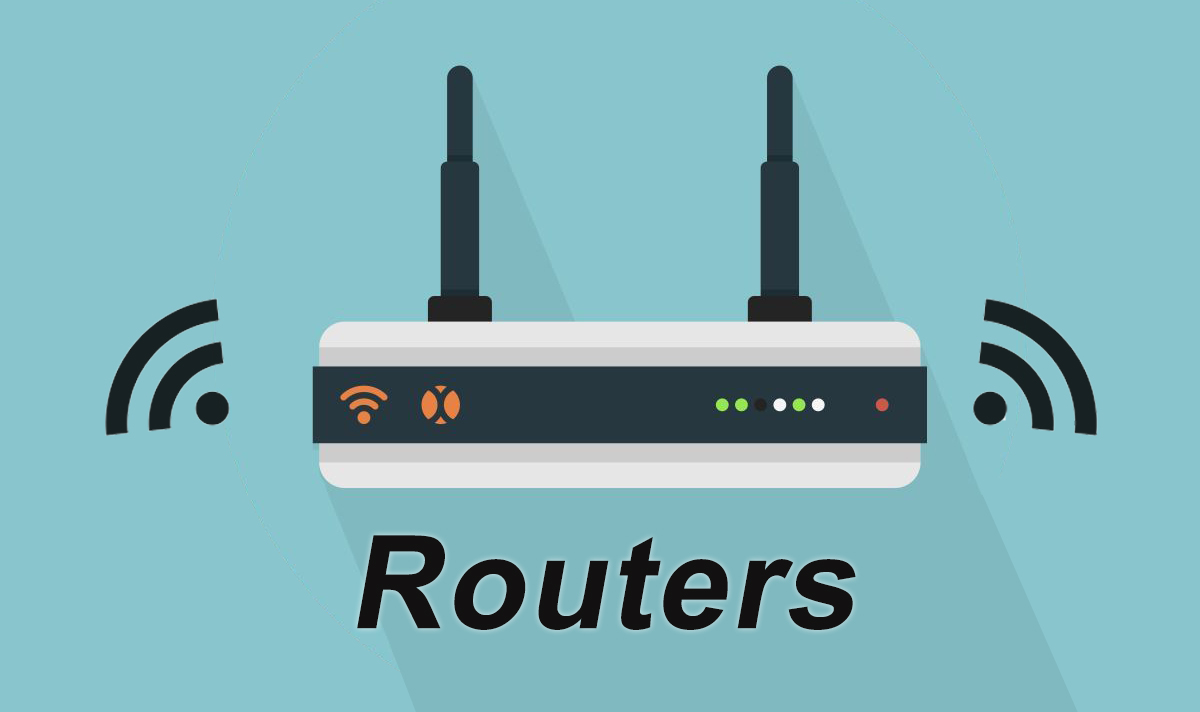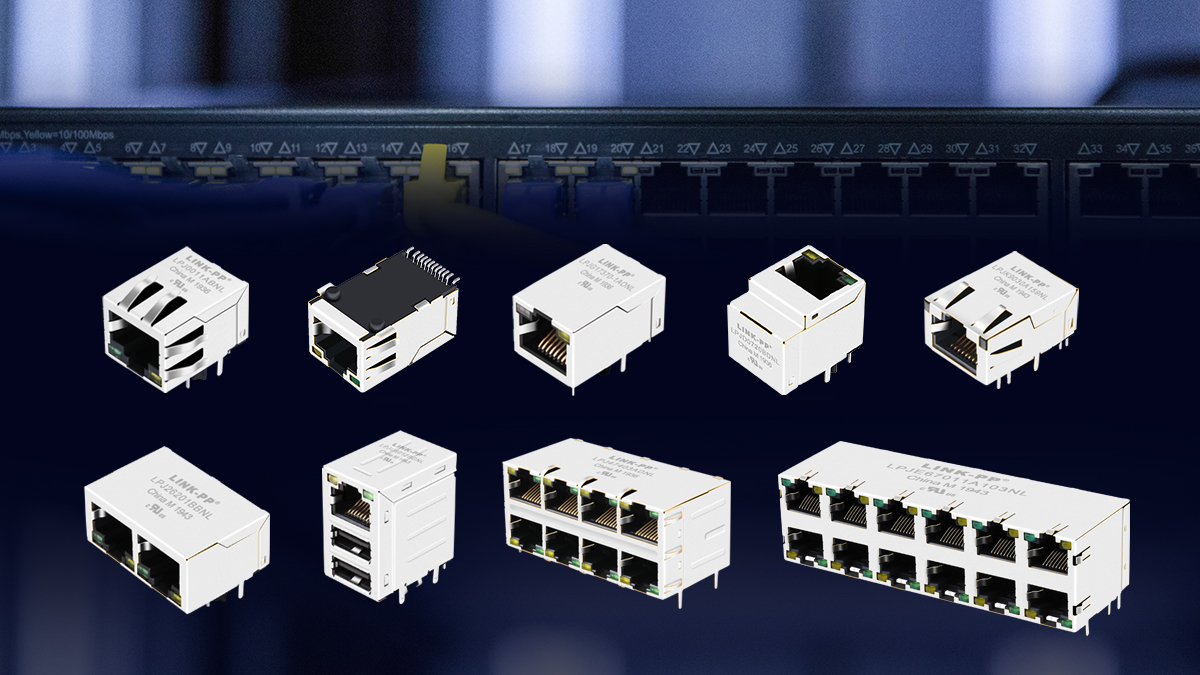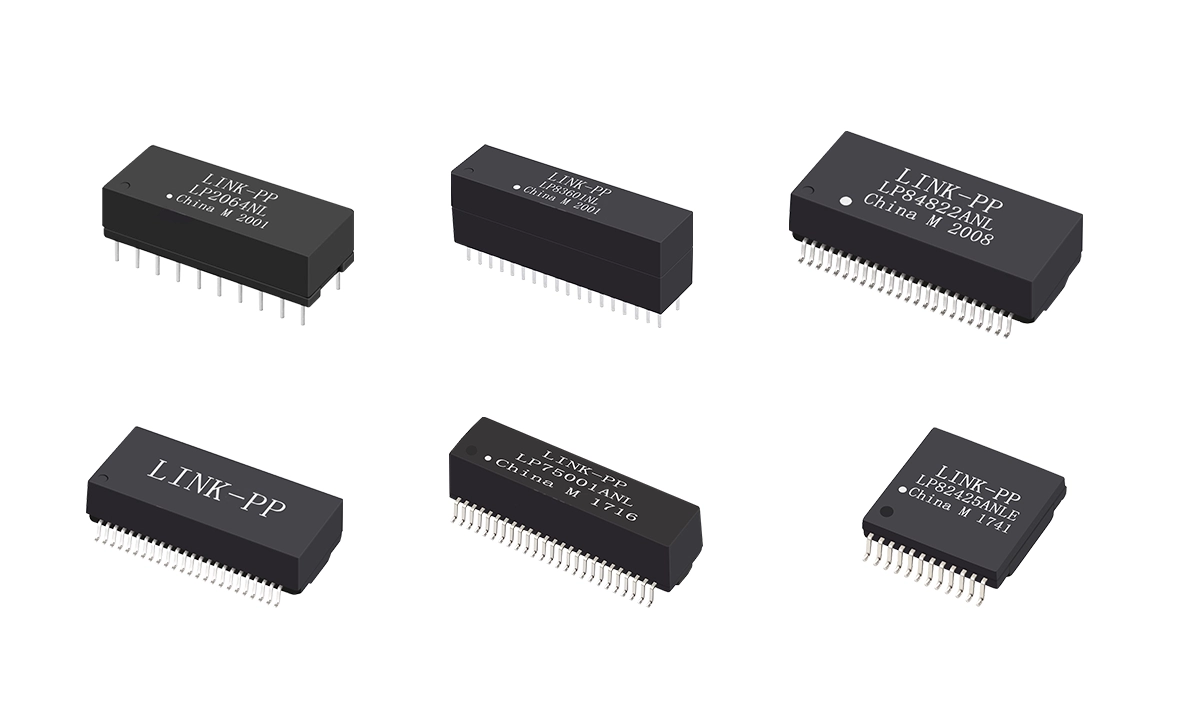A router is a network device primarily used to connect multiple networks and forward data packets between them. Simply put, a router acts like a "traffic controller" or "data distribution center," deciding where data comes from and where it should go.

1. Basic Definition of a Router
A router is a device that forwards data packets between different networks based on IP addresses, enabling communication across local and wide area networks (LAN/WAN). Enterprise routers operate at Layer 3 of the OSI model, using routing tables and protocols (e.g., OSPF, BGP) to ensure efficient, secure, and scalable network traffic flow.
This article offers a professional overview of what a router is, how it works, and what essential components support its function—featuring LINK-PP’s optical transceivers, RJ45 connectors, and LAN transformers, which are key building blocks in Ethernet-enabled router design.
Core Functions of a Router:
Routing: Determines the optimal path for data packets using a routing table.
NAT (Network Address Translation): Allows multiple devices to share a single public IP address.
DHCP (Dynamic Host Configuration Protocol): Assigns IP addresses dynamically to devices on the network.
Firewall & Security: Filters incoming and outgoing traffic to protect against unauthorized access.
Wireless Support (for Wi-Fi routers): Broadcasts wireless signals for mobile and IoT devices.
How a Router Works (Simplified Workflow)
1. A user types a URL into their browser.
2. The device sends a data packet to the router.
3. The router looks up the IP address and finds the best route.
4. It forwards the data to the appropriate destination server.
5. The server responds, and the data is routed back to the user’s device.
A Simple Example
Imagine you have a wireless router at home:
The router connects to a fiber modem via an Ethernet cable.
Your smartphone connects to the router via Wi-Fi.
When you open TikTok, the router sends your data request to the internet.
It receives the video content from TikTok’s servers.
Then it forwards the content back to your phone to play it.
2. Core Components of a Router
Component | Description |
|---|---|
WAN Port | Connects to external networks such as modems or switches |
LAN Ports | Connects to local devices like PCs or wireless access points |
Processor & Memory | Runs the router's operating system and routing algorithms |
Network Interface Chip (MAC/PHY) | Manages physical-layer Ethernet transmission |
Wi-Fi Module | Provides wireless access (only in wireless routers) |
Power System | Supplies electrical power, usually 12V DC input |
3. Key Supporting Components: Powered by LINK-PP
LINK-PP is a trusted manufacturer of Ethernet connectivity solutions, offering components that are widely used in routers, switches, gateways, and embedded networking modules.
A. 🟦 SFP Optical & Copper Modules

🔗 Explore LINK-PP SFP Modules »
LINK-PP provides a full portfolio of SFP transceivers, including copper-based RJ45 SFP modules that allow routers to support Gigabit Ethernet over standard Cat5e/Cat6 cabling. These modules are:
Hot-pluggable, simplifying upgrades and maintenance
Compact and ideal for space-constrained equipment
Compatible with industry-standard SFP cages
Use case: A router with modular SFP slots can flexibly switch between fiber (for long-distance) and copper (for local connections) by inserting the corresponding SFP module.
B. 🟨 Integrated RJ45 Connector Modules

🔗 View LINK-PP RJ45 Integrated Connectors »
🔗 View LINK-PP Modular Jacks »
These components serve as the physical Ethernet ports on the router. LINK-PP's RJ45 connectors are:
Integrated with magnetics (LAN transformers) to meet IEEE 802.3 Ethernet isolation standards
Available in single-port and multi-port configurations
Designed for SMT or through-hole mounting on router PCBs
Use case: Routers that need multiple LAN/WAN ports benefit from compact multi-port RJ45 modules that include built-in magnetics to save PCB space and improve EMI performance.
C. 🟥 LAN Transformers (Ethernet Magnetics)

🔗 Browse LINK-PP LAN Transformers »
These components sit between the Ethernet PHY and the RJ45 connector, providing:
Galvanic isolation to protect the router from electrical surges
Noise suppression via common mode chokes
Compliance with Ethernet standards such as 10/100/1000BASE-T
Use case: In high-EMI environments or PoE applications, LAN transformers are critical to ensuring signal integrity and device protection.
4. Common Types of Routers
Type | Features | Ideal Use Case |
|---|---|---|
Home Wireless Router | Integrated Wi-Fi, user-friendly | Homes, dormitories, small offices |
Enterprise Router | Supports VLANs, QoS, VPNs, firewalls | Businesses, campuses |
Industrial Router | Designed for harsh environments, supports 4G/5G | Industrial IoT, field operations |
Core (Carrier-Grade) Router | High throughput, supports BGP/OSPF | Internet backbone, ISPs |
Routers vs. Switches and Gateways: A Quick Comparison
Device | OSI Layer | Main Function | Typical Use |
|---|---|---|---|
Router | Layer 3 | Directs traffic between different networks | Connects LANs/WANs, enforces policies |
Switch | Layer 2 | Forwards packets within same LAN segment | Internal device connection in LAN |
Gateway | Multi-layer | Translates protocols between network domains | Bridges fundamentally different networks |
5. Key Networking Terms
Term | Meaning |
|---|---|
IP Address | A unique identifier for each device on a network |
MAC Address | Hardware address of a device’s network interface |
NAT | Network Address Translation – enables private IPs to access the internet |
DHCP | Dynamic IP address assignment protocol |
LAN/WAN | Local Area Network / Wide Area Network |
6. Summary
This is the foundation of how routers keep modern digital life running. In professional applications—like corporate networks, industrial systems, or telecom infrastructure—routers become even more complex and powerful, often equipped with modular ports, SFP transceivers, and high-grade Ethernet connectors.
For example, LINK-PP offers high-quality SFP modules, RJ45 connector modules, and LAN transformers that are widely used in router designs to ensure stable, standards-compliant Ethernet performance.
Interested in hardware solutions for router integration?
Explore LINK-PP's product lines:




